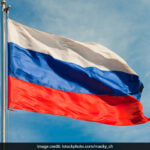
Donald Trump often accuses other NATO members of not paying dues (File)
Brussels:
Former U.S. President Donald Trump has drawn fierce criticism from the White House and senior Western officials when he said he would not protect NATO allies who underinvested in defense and would even encourage Russia to attack them.
Here are answers to some key questions about NATO, Trump’s comments and their impact. Trump is running for re-election to the White House in November and leads President Joe Biden in some polls.
What is NATO?
The North Atlantic Treaty Organization was founded in 1949 as a political and military alliance of North American and European countries to counter the Soviet Union as Cold War tensions escalated.
Article 5 of its founding treaty stipulates the principle of collective defense, whereby an attack against one member is considered an attack against all members.
NATO takes decisions by consensus, but the political and military might of the United States means it is by far the most powerful country in the alliance and its nuclear arsenal is seen as the ultimate security guarantee.
What countries are in NATO?
NATO currently has 31 member states, most of which are European countries, as well as the United States and Canada.
The latest member is Finland, which joined last April in response to Russia’s 2022 invasion of Ukraine. Sweden has applied to join along with Finland but is waiting for Hungary to approve its application, the last important step before joining.
During the Cold War, NATO’s main mission was to protect Western Europe from the Soviet Union. After the fall of the Berlin Wall in 1989, NATO expanded to include former communist bloc countries in Central and Eastern Europe.
NATO members include large countries such as the United Kingdom, France, Germany, and Turkey, as well as small countries such as Iceland and Montenegro.
What did Trump say about NATO?
As US president from 2017-21, Trump frequently lambasted members such as NATO and Germany, accusing them of not paying enough for their own defense and relying on Washington to protect them. He openly questioned the principle of collective defence.
Other U.S. governments have also accused the Europeans of underinvesting in defense, but in less pointed terms.
Trump took his criticism to a new level at a campaign rally in Conway, South Carolina, on Saturday when he recounted what he called a conversation with “the president of a great power.”
“Well, sir, if we don’t pay and we get attacked by Russia, will you protect us?” Trump quoted the unnamed leader as saying.
“I said: ‘You didn’t pay? You defaulted?’ He said: ‘Yeah, let’s say that happened. “No, I’m not going to protect you. In fact, I’m going to encourage them (Russia) to do whatever they want. You have to pay a price,” Trump said.
How is NATO funded?
Trump often accuses other NATO members of not paying their dues, giving the impression that the alliance is like a dues-paying club.
But NATO operates differently. It has a number of mutual funds into which all members contribute. But much of its strength comes from member states’ own defense spending – on maintaining troops and buying weapons that NATO can also use.
However, NATO members have pledged to spend at least 2% of gross domestic product (GDP) on defense each year – a target that most failed to meet last year.
How many NATO members have met defense spending targets?
According to NATO estimates last July, 11 member countries were expected to be able to achieve the 2% target by 2023. These member states include Poland, the United States, Greece, Estonia, Lithuania, Finland, Romania, Hungary, Latvia, the United Kingdom and Slovakia.
Growth in Europe’s economic heavyweight Germany is expected to be 1.57%. But German officials said they expected to hit the 2% target this year, thanks in part to a 1 billion-euro special fund set up to deal with Russia’s war in Ukraine.
Spain, Belgium and Luxembourg spend the lowest proportions of gross national product, according to NATO data.
NATO is expected to release updated data in the coming days showing more allies are reaching the 2% target, according to people familiar with the matter.
What is Article 5 of NATO?
In Article 5 of the founding treaty, NATO member states declare that an armed attack against one or more countries in Europe or North America “shall be considered an attack against all nations.”
They agreed to “take, individually and jointly with other Parties, such actions as they deem necessary, including the use of force, to assist the party or parties under attack”.
However, Article V does not commit to an automatic military response to aid an ally under attack. This means that the effectiveness of Article 5 depends on clear statements from political leaders that it will be backed up by action.
That’s one reason Trump’s comments caused such outrage, especially at a time when NATO is on high alert about Russia’s intentions following its invasion of Ukraine.
By suggesting he would not take military action to defend allies, Trump undermined the assumptions that gave Title V power.
“Any suggestion that allies do not defend each other undermines our security, including that of the United States, and puts American and European soldiers at greater risk,” NATO Secretary-General Jens Stoltenberg said on Sunday.
(Except for the headline, this story has not been edited by NDTV staff and is published from a syndicated feed.)
Follow us on Google news ,Twitter , and Join Whatsapp Group of thelocalreport.in













